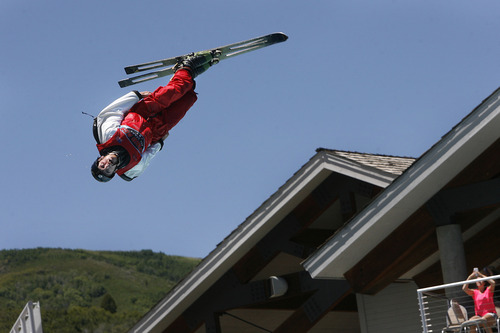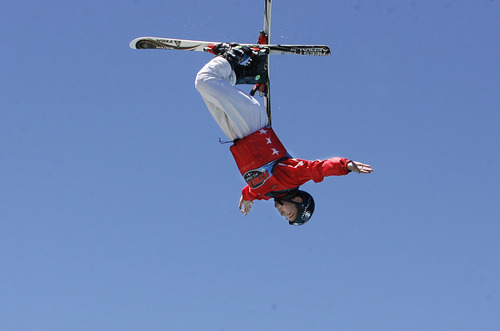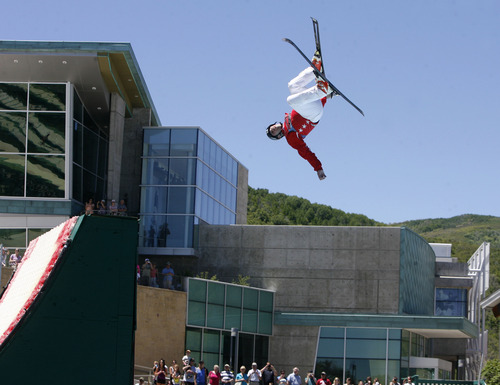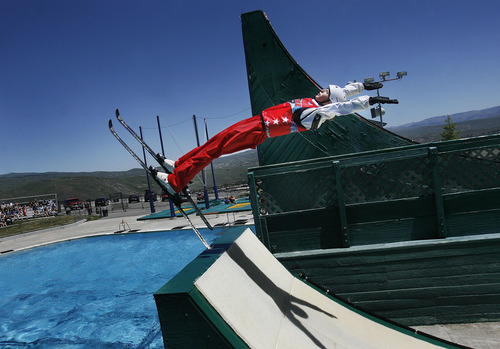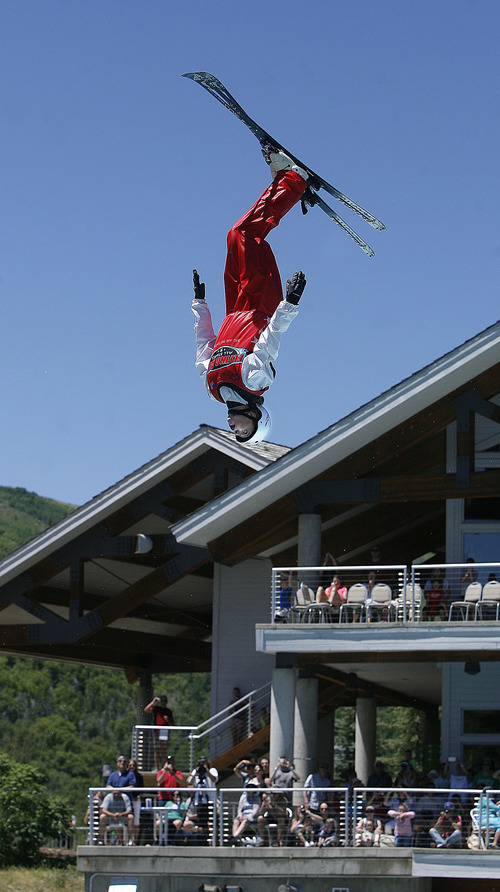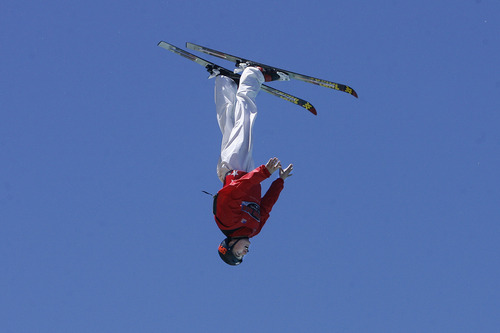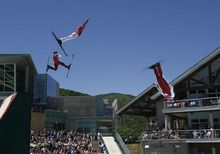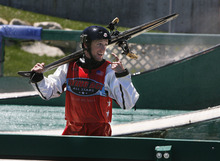This is an archived article that was published on sltrib.com in 2013, and information in the article may be outdated. It is provided only for personal research purposes and may not be reprinted.
Park City • There's not a lot of time for Dylan Ferguson to think as he skis down the ramp.
He focuses on how he'll twist, which muscles he'll flex and how he'll keep track of the ground as he skis off a ramp 60 feet into the air.
By the time Ferguson splashes into the Olympic Park pool — 10 feet deep of watery cushioning — he leaves crowds dizzy trying to keep track of his flips and spins. To the layman, it's an unthinkable combination of body control and spectacular height. To Ferguson, it's a life-defining passion.
"It's a lot of flipping and twisting up there," he said. "But we've all been doing it for a long time, and you really build it up over a long time. It's really awesome to have crowds there, and it gets you in that competition mindset."
The Flying Ace All-Stars, a group of elite skiing aerialists who train year-round, had their first exhibition Sunday at what's become a traditional summer display in Park City. For just over half an hour every week through September, the best freestyle skiers in the country show what they've been working on: sky-high whirling leaps into water instead of the snowy contours of a mountainside.
The shows help the athletes to pay for a consuming and expensive pursuit of Olympic dreams, but also give them just a taste of appreciation for all the grueling days of training.
"Every performer gets extra adrenaline from having a crowd watching them," said Fuzz Feddersen, who produces and hosts the weekly shows. "Some of them get an extra boost from having people cheer them on."
The shows are only a slice of the athletes' intense summer schedules. They train five days a week, with at least four hours of jumping each day, emphasizing tricks they can't yet land on snow. With gym workouts, trampoline sessions and film study, an aerialist can work 10 to 11 hours daily to perfect jumps that barely last more than a second each.
"The summer always flies by so fast, and you think you're going to have all this time, then it's just over," said Kiley McKinnon, most recently the female rookie of the year on the sport's winter tour. "It's definitely a lot of work. We all get along like a big family."
The sport isn't cheap. Skiers' families are often supportive, but others wait tables or baby-sit in their limited free time to keep up with the costs of training and travel.
The Olympic Park pays Feddersen's company for the shows, which also can include private events with pyrotechnics and complicated coordination. Feddersen pays the skiers for doing what they love.
"For a lot of these athletes, it's either flipping burgers or flipping their bodies," said Feddersen, a three-time Olympian. "They work really hard, and to be able to make a little money to support themselves while showing what they can do."
Attendees get an Olympic preview. Ferguson, for example, has won the last three national championships. A nasty bout with appendicitis before Vancouver in 2010 kept him off the slopes, but he's focused now on his chances at the Sochi 2014 Winter Games.
McKinnon, 17, is hopeful that a trip to those games in Russia are in her future as well. But there's a lot of jumping and training to do between now and then — and a lot of climbing up stairs in wet gear.
"That's the worst part,'' she said, "when you're soaking, and you go up stairs for hours and hours to do your jumps.
"But it's all worth it in the end. We love doing this."
Twitter: @kylegoon



